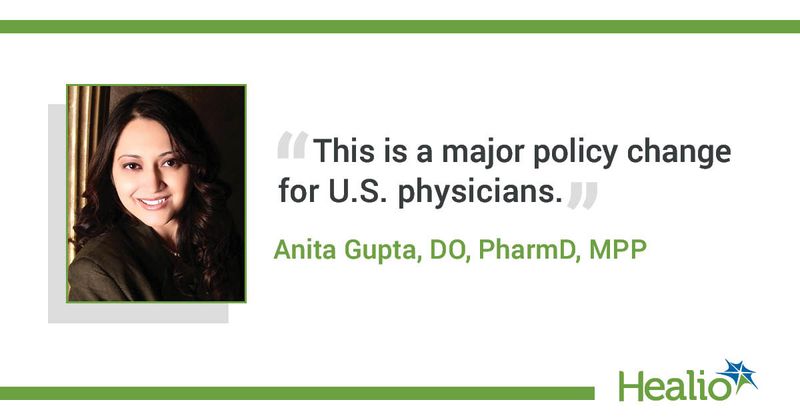HHS expands access to buprenorphine for opioid use disorder
HHS has released new guidance that the agency said will improve access to medication-assisted treatment for opioid use disorder.
Specifically, physicians with a Drug Enforcement Administration (DEA) registration number are no longer required to apply for a separate waiver to prescribe buprenorphine for opioid use disorder (OUD) treatment. The guidance states that eligible physicians:

- are limited to treating 30 patients or fewer with buprenorphine for OUD at any one time, unless they work in a hospital;
- can only use the exemption to prescribe drugs or formulations covered under an X-waiver of the DEA’s Controlled Services Act such as buprenorphine and not the prescription, dispensation, or use of methadone for OUD treatment; and
- must place an “X” on applicable patient prescriptions and “clearly identify” that the prescription is for OUD.

“This is a huge step in the direction that we think is appropriate,” Adm. Brett P. Giroir, MD, assistant secretary for health at HHS, said in a conference call with reporters. “But ... this is not a rule. This is not a law. It is a practice guideline.”
Small steps are needed to make an impact in the opioid crisis, said Nora D. Volkow, MD, director of the National Institute on Drug Abuse — one of several agencies that will monitor the new guideline’s rollout and impact.

“By doing things in a conservative way, we can ensure we’re not producing harm by things that we may not know yet,” Volkow said.
Patrice Harris, MD, MA, chair of AMA’s Opioid Task Force, said in a statement the association “strongly endorses” the new guideline, which removes a “separate and burdensome regulatory regime” that office-based physicians often encounter when treating patients with OUD.

“Removing the waiver requirement can also help lessen the stigma associated with this treatment and the persistent health disparities in treating substance use disorders,” Harris said.
Last month, the CDC reported 81,230 overdose deaths in the United States in a 12-month period that ended in May 2020.
“The increase of synthetic overdose mortalities from synthetic opioids like fentanyl was up 44.75%,” during that same period, Giroir said during the call. “If this rate continues, we could see losses of between 85 and 90,000 Americans in 2020 due to overdoses.
“Many people will say this [new guideline] has gone too far. More people will say this has not gone far enough,” Giroir continued. “We think this is a measured, logical, appropriate, evidence-based and patient-centered approach that may save tens of thousands of lives over the coming months and years.”
References:
- AMA. Statement on HHS decision to remove barriers for opioid treatment. https://www.ama-assn.org/press-center/ama-statements/ama-statement-hhs-decision-remove-barriers-opioid-treatment. Accessed January 14, 2021.
- HHS. Practice Guidelines for the Administration of Buprenorphine for Treating Opioid Use Disorder.

